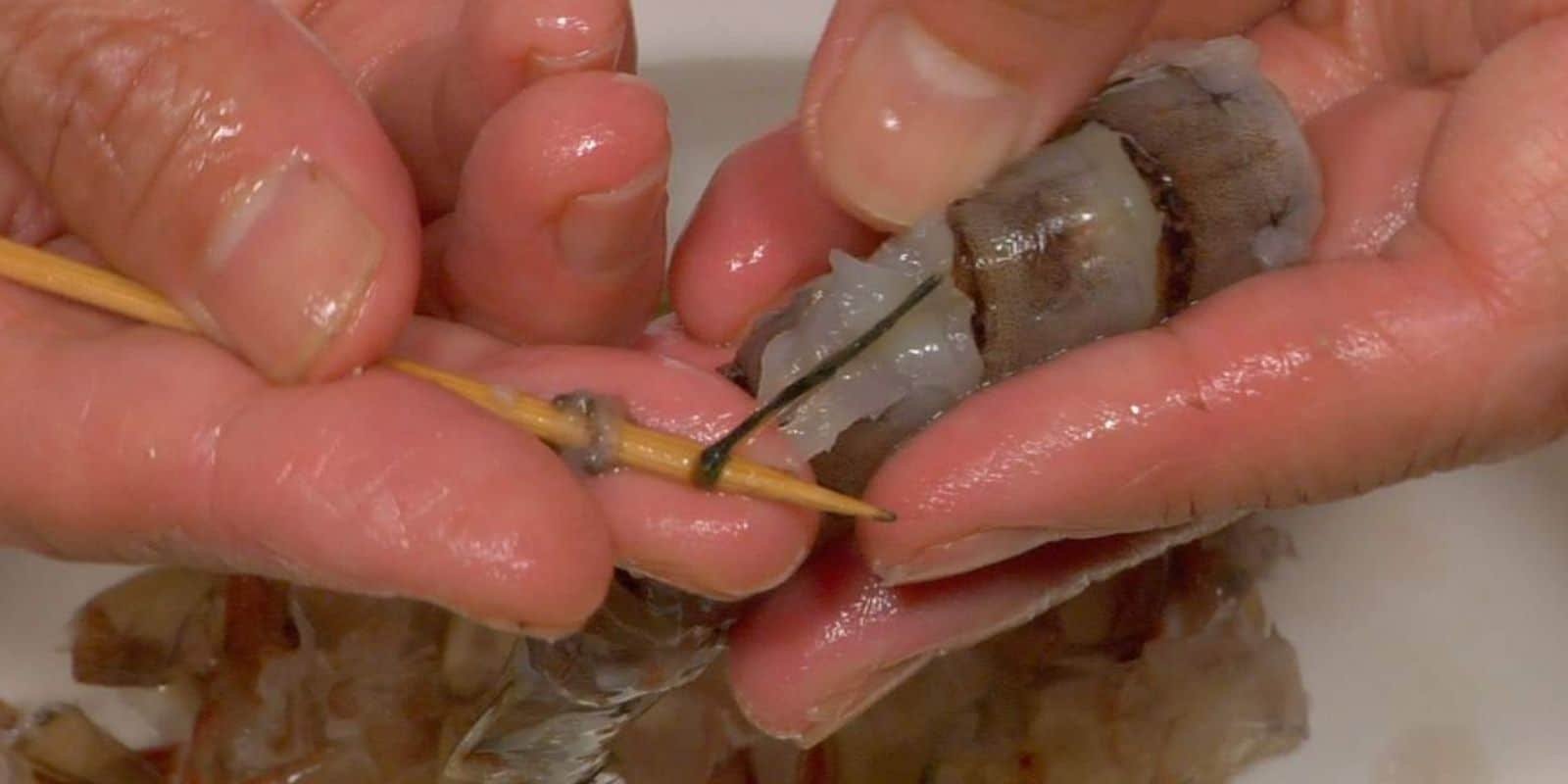Ever picked up a raw shrimp and wondered about that mysterious dark line running along its body? You’re not alone! As a seafood enthusiast and food blogger I’ve received countless questions about these “veins” in shrimp. Today, I’m gonna break down everything you need to know about those black lines – what they are if they’re safe to eat, and whether you should bother removing them.
What Are Those Black Lines in Shrimp, Really?
Let’s clear up a common misconception right away – those dark lines aren’t actually veins! Here’s what you’re looking at
- Top Dark Line: This is the shrimp’s digestive tract (yep, it’s poop!). It runs along the back of the shrimp.
- Bottom Dark Line: This is actually a nerve bundle that controls the shrimp’s basic functions, similar to our nervous system.
The Digestive Tract: Not So Scary After All
The dark line on top that everyone freaks out about is just the shrimp’s intestinal tract. Here’s what makes it dark:
- Partially digested food
- Traces of sand and mud
- Natural diet (algae, plankton, and tiny sea creatures)
Is it Safe to Eat the “Vein”?
Short answer Yes!
Here’s why it’s totally fine to eat shrimp with the digestive tract intact:
- Cooking kills any bacteria present
- No real health risks involved
- Many people worldwide eat shrimp without deveining
- It’s purely a matter of personal preference
To Devein or Not to Devein?
Let’s weigh the pros and cons:
Pros of Deveining
- Better visual appearance
- No gritty texture from sand
- Sweeter, cleaner taste
- More appealing presentation
Cons of Deveining
- Time-consuming process
- Risk of tearing the shrimp
- Might lose some flavor
- Not necessary for food safety
How to Devein Shrimp: A Simple Guide
If you decide to remove the digestive tract, here’s my super easy method:
-
Prep Work:
- Get raw shrimp (shells on works best)
- Grab a sharp paring knife or deveining tool
- Have paper towels ready
-
The Deveining Process:
- Make a shallow cut along the shrimp’s back
- Gently lift out the dark vein
- Give it a quick rinse
- Pat dry with paper towels
Pro tip: I find it easier to devein before cooking – the flesh is less likely to tear!
The Bottom Line (Nerve Bundle)
That black line on the bottom? Don’t sweat it! It’s just a bundle of nerves that:
- Controls the shrimp’s basic functions
- Is completely safe to eat
- Doesn’t affect taste
- Is more visible in some shrimp varieties (like White Tiger shrimp)
Common Questions I Get About Shrimp Veins
Does the vein size matter?
Bigger shrimp = bigger digestive tract. You’ll notice it more in jumbo shrimp than tiny ones.
Why are some veins darker than others?
It depends on:
- What the shrimp ate recently
- The shrimp’s size
- Whether it’s wild-caught or farm-raised
- How fresh it is
Should I always buy deveined shrimp?
Nah, it’s totally up to you! I personally devein larger shrimp but don’t bother with smaller ones.
My Personal Take
After years of cooking shrimp, here’s what I do:
- For everyday cooking: Leave small shrimp as is
- For fancy dishes: Devein large shrimp
- For guests: Usually devein (some people get squeamish!)
Tips for Buying and Preparing Shrimp
-
Freshness Matters More Than Veins
- Look for firm, translucent flesh
- Avoid strong fishy smells
- Check for fresh-looking shells
-
Storage Tips
- Keep refrigerated until ready to use
- Use within 2 days if fresh
- Store properly wrapped or sealed
-
Cooking Recommendations
- Cook until opaque and slightly firm
- Don’t overcook (they’ll get rubbery)
- Season well regardless of deveining
Final Thoughts
The whole “vein” situation in shrimp isn’t as gross or complicated as people make it out to be. Whether you’re team devein or team leave-it-in, you’re not wrong! It’s all about personal preference and how you’re planning to serve your shrimp.
Remember, millions of people worldwide eat shrimp without deveining them, and they’re doing just fine. Focus more on getting fresh shrimp and cooking them properly – that’ll make a bigger difference in your dish than whether you removed that digestive tract or not.
Now, who’s ready for some shrimp scampi?
Want more seafood tips and tricks? Drop a comment below or check out my other blog posts about cooking perfect seafood dishes!

There’s a black line on the top of my shrimp – what is it?
The black line on the top of a shrimp is its digestive tract, so yes, that’s poop you can see. It’s safe to eat, but in general people tend to prefer their shrimp deveined, i.e. with the digestive tract removed, because the tract can have a bitter taste and a sandy texture. If this is your preference, you can buy shrimp already deveined, or you can devein it yourself at home, which is easiest to do before you cook it.
Find what you are looking for Search:


